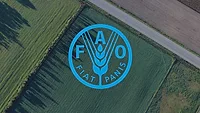FAO Encourages E-Notification Systems for Imported Food Safety, Releases Guidance

Credit: geralt via Pixabay
The Food and Agriculture Organization of the United Nations (FAO) is encouraging countries around the world to adopt e-notification systems to bolster food safety in light of increasingly complex and globalized food chains. To support nations in developing and implementing e-notification systems, FAO has published Technical Guidance for the Implementation of E-Notification Systems for Food Control (the “Technical Guidance”), which outlines the legal basis, the structure and operational parameters, and the infrastructure and human resources requirements of e-notification systems for food control.
The creation of the Technical Guidance was prompted by years of compounding FAO discussions regarding how food exporters can gain access to major markets through better understanding of and compliance with import controls, as well as best practices within a risk-based food import control system. After recognizing that each country is at a different stage in moving toward a risk-based imported food control system, FAO held a workshop that yielded recommendations for import e-notification systems, such as the EU’s Rapid Alert System for Food and Food Network (RASFF). Subsequently, FAO launched a project, titled, “Digital solutions in support of improved official control services,” of which the Technical Guidance is a result.
According to FAO, over one third of global agrifood exports cross national borders at least twice before reaching their final destinations. Furthermore, there are heightened food safety risks associated with products that involve multiple, geographically dispersed producers, processors, and distributors. Traceback investigations in the event of food safety incidents are also increasingly difficult. For these reasons, FAO sees the need for countries to develop more rigorous controls for agrifood imports, including e-notification systems that are tailored to national needs and resources.
The Technical Guidance identifies the required components, such as the legal framework, that must be in place to support an e-notification system. Additionally, the Technical Guidance highlights the human, hardware, and software resources that are necessary for e-notification systems. The Technical Guidance also exemplifies a generic e-notification system structure, including the responsibilities that need to be assigned, the types of notifications that exist, and the required institutional arrangements. Finally, the Technical Guidance stresses the importance of collecting and cataloguing traceable data that is formatted to enable international information exchanges.
The Technical Guidance also provides four case studies of real-life food control notification systems in Japan, Canada, Chile, and the EU. A checklist of aspects to be considered when implementing an e-notification system is also provided.
Looking for quick answers on food safety topics?
Try Ask FSM, our new smart AI search tool.
Ask FSM →








